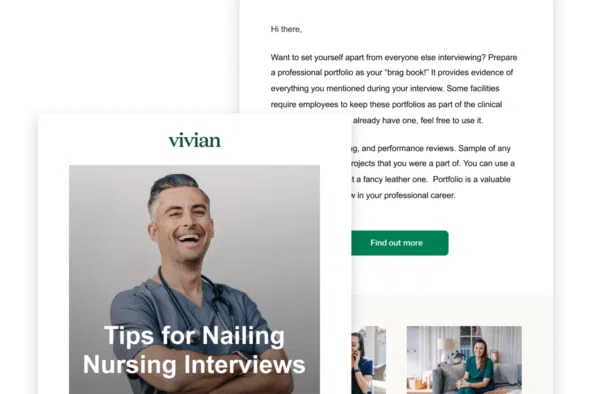Though many jobs moved from in-person to remote during the COVID-19 pandemic, nursing was certainly at the top of the essential in-person list. While the travel nursing jobs sector saw rapid growth, virtual nursing also began to take hold during the pandemic — and may continue to play a vital role in the healthcare field in the very near future.
The U.S. faces a dire shortage of nurses: 100,000 registered nurses have left the profession over the past two years, according to a National Council of State Boards of Nursing study. An additional 610,000 nurses are expected to depart by 2027.
Nursing is already a profession prone to high stress levels and burnout, but the pandemic greatly exacerbated these conditions. At least 3 in 5 nurses (62%) polled in the NCSBN study said they experienced an increased workload during the pandemic. Large percentages reported feeling “emotionally drained,” “used up,” “fatigued,” “burned out,” or “at the end of their rope” almost every day. Compounding this, an aging population has led to increased demand for healthcare services while retirees are outpacing new entrants to the nursing field.
These factors can have dire public health consequences; the more stressed and stretched a nurse is, the more likely they are to bypass safety protocols, make mistakes or otherwise compromise care, resulting in increased infection, under- or over-medication and inconsistent patient treatment.
A Shift to Virtual Nursing
Nursing is just one of many care-centered services adapted to virtual availability during the pandemic. The use of telehealth services between February and April 2020 alone grew 78-fold before leveling off at about 38 times that of pre-pandemic usage.
What started out of necessity now seems to be sticking around due to shifting preferences. Patients like telehealth better than they did pre-COVID, perhaps because once they had to use it, they found they liked, and even preferred, some of the benefits. Virtual nursing fills gaps in rural areas; remote services allow nurses to reach more people in real time. Virtual services can also be more time-efficient, facilitating nurses to serve more patients in less time.
Moreover, the infrastructure to support telehealth has expanded to meet demand, which includes not just internet connectivity and apps that are easy to use but also insurance companies standardizing payments for telehealth sessions. The range of health services enabled by telehealth is growing, and venture capitalists invested in digital health in 2020 at triple the rate of that in 2017, according to an analysis by McKinsey.
For those seeking to enter the field, virtual connections can allow people to pursue their nursing studies at least partially online, which makes the career pipeline more accessible to a wider candidate pool. Learning how to provide support through telehealth is becoming an increasingly routine piece of the nursing curriculum. Students are trained to use pointed, empathy-led questions to remotely assess a patient, often complemented by medical records and remote monitoring tools.
While adapting care virtually first arose as an emergency response to the pandemic, it “now offers a chance to reinvent… care models, with a goal of improved healthcare access, outcomes and affordability,” McKinsey reported in 2021.
Nurses See Benefits, Too
Beyond benefits for patients, there are also potential benefits for nurses too. Working remotely offers healthcare professionals less risk of contracting illnesses from patients, increased flexibility in childcare, and a better work-life balance. It also may attract RNs who would otherwise retire to stay in the profession longer than they would in person, as there is often less physical strain than when they’re onsite.
These benefits could offset some of the heavy burnout and stress that may deter students from entering the nursing profession — and right on time: The Bureau of Labor Statistics expects registered nurse employment to grow 6% from 2022 to 2032, which is far faster than average for most jobs. The BLS also anticipates more than 190,000 RN openings per year as needs grow and existing nurses leave the labor force.
As more nursing positions open up, institutions must find a way to make the profession more supportive and sustainable for prospective RNs. Virtual nursing might be one key to making healthcare a better environment, for nurses and patients alike.
Story editing by Jeff Inglis. Copy editing by Paris Close. Photo selection by Clarese Moller.
Feature Photo Attribution: Studio Romantic // Shutterstock




